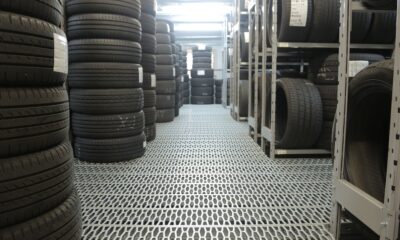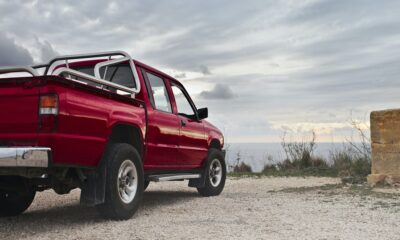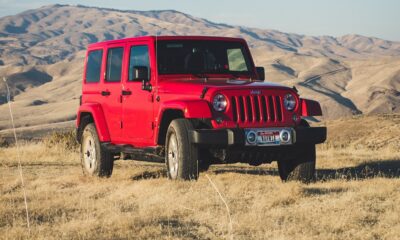Buyers Guide
What to Look For in an SUV

SUVs are all the rage these days and for good reason. They’re spacious, roomy, and comfortable. They’re also great for families needing to get around with their kids.
But picking the right SUV for your needs can be tricky as there’s a lot to consider before making your choice – Do you want one with a third row? What about cargo space? And how much are you willing to pay?
We’ve listed seven things you need to consider when choosing an SUV.
Engines and Fuel Efficiency
A four-cylinder engine typically powers small SUVs, but some models perform poorly. Most midsized SUVs are equipped with a V6 engine, which offers a good balance of power and fuel economy. Some large and midsized models come with a V8 that provides effortless acceleration and is better for towing heavy loads. The fuel efficiency of models with six-, seven-, eight-, or nine-speed automatic transmissions is typically better than that of a conventional manual transmission.
Wheel Drives
All SUVs are available in all-wheel drive (AWD) or four-wheel drive (4WD). AWD is a lighter system that is always engaged and ready to distribute power. 4WD vehicles have low-range gearing to help them navigate rugged off-road terrain. For typical bad weather and light off-road driving, AWD usually works fine. Consider a two-wheel-drive vehicle if you travel almost entirely on paved surfaces free of snow or ice. If you go with 4WD, look for a system with full-time 4WD capability.
Off-Roading
A good off-road SUV must have a low-range four-wheel drive system, a high ground clearance, and skid plates to protect the underbody mechanics. Although large SUVs can be modified with aftermarket parts and have low-range four-wheel-drive systems, their extra length can be a problem on narrow trails.
Access
Most SUVs have wide front and rear doors with plenty of headroom for entry and exit. However, because their ground clearance is greater than that of a car, they can be difficult to use for shorter people, children, and the disabled. Seats in the third row are particularly challenging to get to. If you anticipate using the third row, look for models with large rear door openings and test the mechanism for moving the second-row seats forward.
Cargo
Due to an SUV’s flexible seating arrangements, the area behind the front seats can serve as cargo space if necessary. The cargo floor of an SUV is typically higher than that of a minivan, which can make loading large objects more challenging. On the other hand, truck-based models usually have greater maximum load capacities, allowing you to carry more weight. Some even have power-operated liftgates, which make accessing the cargo bay easier when your hands are full.
Safety Features
According to statistics, SUVs experience more rollover accidents than cars because they are taller and more top-heavy. Almost all new SUVs have side airbags that protect the driver’s head, typically in the form of a side curtain covering the front and rear windows. These airbags are intended to keep passengers inside the vehicle during a rollover.
Navigation and Connectivity
In-car navigation systems are an excellent feature if you frequently drive in unfamiliar territory. Built-in navigation systems feature large, clear screens mounted on the dashboard, as well as controls that are generally simple to use. Most systems have touch-screen displays, which make entering destinations easy. Current navigation systems allow smartphones to communicate wirelessly with the car’s audio system. This enables hands-free phone operation.

-

 Accessories & Financing2 years ago
Accessories & Financing2 years agoThings To Check Before You Rent A Car
-

 Accessories & Financing2 years ago
Accessories & Financing2 years agoWhy is Car Insurance Important?
-

 Accessories & Financing2 years ago
Accessories & Financing2 years agoTips to Get Your Tires to Last Long
-

 Buyers Guide2 years ago
Buyers Guide2 years ago6 Things to Consider When Purchasing a Truck
-

 Buyers Guide2 years ago
Buyers Guide2 years agoAll You Need to Know About Buying a Truck
-

 Buyers Guide2 years ago
Buyers Guide2 years agoLuxury SUV and Sedans: What To Know
-

 Accessories & Financing2 years ago
Accessories & Financing2 years agoHow To Get An Auto Loan With Poor Credit
-

 Accessories & Financing2 years ago
Accessories & Financing2 years agoA Beginner’s Guide to Auto Financing

